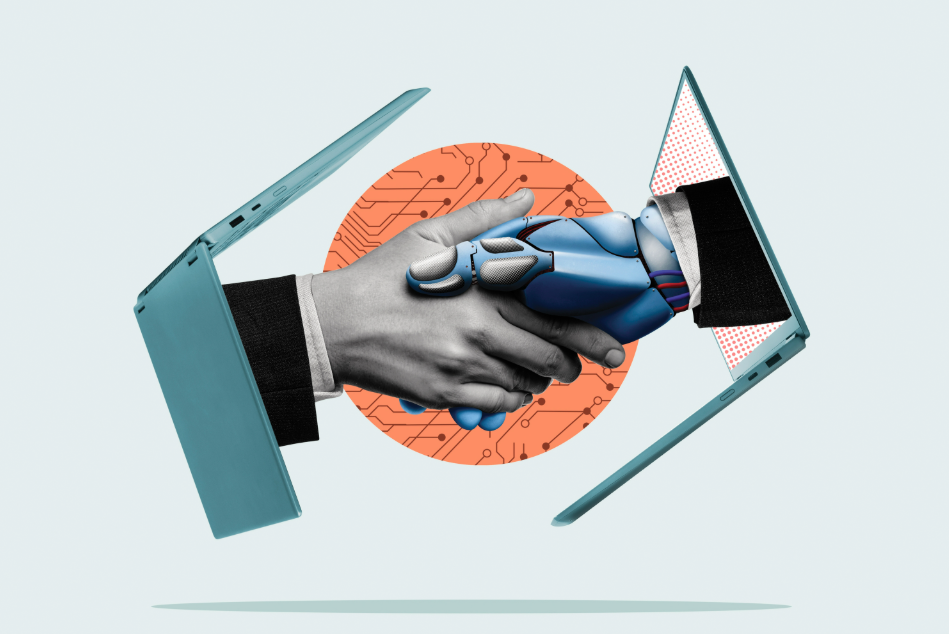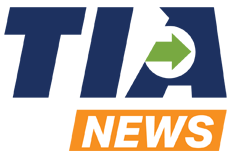Strengthening Business Relationships with Technology

By Russ Felker, Trinity Logistics
Artificial intelligence is often discussed in the context of automation, efficiency and productivity. But what if AI could also help you be a better person—like how you interact with colleagues, clients and business partners? Look, we’ve all sent THAT email, then re-read it the next day and cringed. People are emotional – and that’s a good thing – but sometimes getting a little help being more cheerful, collaborative, thoughtful or empathetic can be the difference between continuing to build a relationship and damaging it.
Never Fear . . . AI is Here!
Building and maintaining strong relationships is a key factor in professional success, and AI can play a crucial role in helping individuals improve their interactions with others. There are a lot of tools (more than the stars in the sky it seems) out there to help us be better humans. The list below is just a sample – definitely not an exhaustive list. These tools can be accessed/used by anyone and are somewhat stand-alone as opposed to those built into other software you may have. Regardless of whether your favorite tool is mentioned by name below, you likely have access to one of these types of tools in your world today.
This isn’t about turning into a robot or turning into one of the humans from Wall-E. It’s about using AI as a wingmate to help you communicate, connect and collaborate better. Let’s dive in.
1. AI-Powered Communication Coaching
Effective communication is the foundation of any strong business relationship. AI tools like Grammarly, ChatGPT and Otter.ai can provide valuable feedback on how you write and speak.
Example: Crafting a More Effective Client Email
Imagine you’re following up with a prospective client after a product demo. Instead of firing off a generic “Just checking in…” email that’s about as exciting as plain toast, you run it through an AI tool like Grammarly or ChatGPT. In seconds, it suggests a more engaging subject line, helps you refine your tone to be confident yet warm, and highlights key takeaways from your conversation.
The result? Your email feels personalized and compelling—and increases the chances of a positive response.
Other AI-driven communication tools can help with:
- Verbal Communication: There are many tools (e.g. Otter.ai) that can transcribe your sales calls and provide insights into how often you say “um” or speak too quickly, helping you refine your delivery.
- Difficult Conversations: AI chatbots like ChatGPT can simulate conversations where you practice giving constructive feedback or negotiating a deal. Put in some information and just ask the tool to simulate the person on the other side of the conversation. You’ll be amazed at the tool’s ability to help you. You can even ask how to refine your side of the communication and re-respond to see potential differences in approach.
By leveraging AI for communication coaching, you can become more intentional in your interactions, reducing misunderstandings and fostering stronger relationships.
2. Personalized Relationship Management with AI CRM Tools
You know that person who always remembers birthdays, asks about your latest vacation and follows up at just the right time? No time to stew in your envy, AI can help you be that person (without needing a photographic memory). AI-powered customer relationship management (CRM) tools can track key details and remind you to follow up before relationships start to fade.
Example: Remembering Key Details About a Client
Let’s say a longtime client casually mentions that their daughter is applying to college. You note this in an AI-powered CRM, and a few months later, it reminds you before your next call. So instead of the usual “How’s business?” opener, you ask, “How’s your daughter’s college application process going?”
Boom. Instant personal connection.
Other AI-driven relationship management capabilities include:
- Smart Follow-Ups: AI can remind you when it’s time to check in with a contact, ensuring you maintain regular communication.
- Contextual Insights: AI tools like Clay or Affinity analyze a contact’s recent LinkedIn activity or company news, suggesting relevant talking points.
By using AI to manage relationships proactively, you demonstrate that you genuinely care about your contacts, strengthening trust and rapport.
3. AI for Emotional Intelligence & Empathy Enhancement
You know the saying, “it’s not what you say, it’s how you say it”? AI can help with both. Understanding others’ emotions and responding with empathy is a skill—one that AI tools like Replika, Zoom AI Companion and Cogito can help refine.
Example: Adjusting Your Tone in a Virtual Meeting
You’re leading a virtual team meeting, and Zoom’s AI Companion quietly flags that your tone is coming across as a little too blunt. Instead of steamrolling ahead, you take a beat, soften your delivery and throw in some open-ended questions to make the conversation more collaborative.
Result? Your team feels heard, and the meeting ends on a positive note.
Other AI-powered emotional intelligence tools include:
- AI-Powered Empathy Training: Replika or AI coaching tools can simulate conversations where you practice responding to emotional concerns from colleagues.
- Sentiment Analysis: Cogito, used in customer service settings, helps professionals recognize when they need to adjust their tone to be more engaging or supportive.
Using AI to refine emotional intelligence ensures that business relationships are built on genuine connection rather than transactional interactions. AI won’t make you more human—but it can help you be a better one.
4. AI for Time Management & Life Balance
Work-life balance? Too limiting. Let’s call it Life Balance—because work is part of life, and AI can help you optimize your time to be present for all of it.
AI-driven scheduling and productivity tools like Clockwise, Motion and RescueTime help you get the most out of your day—without constantly running late or double-booking.
Example: Smart Meeting Scheduling to Respect Others’ Time
We’ve all been stuck in the scheduling vortex—an endless back-and-forth of “When are you free?” emails. Instead, you use an AI-powered scheduling tool like Calendly or Google Calendar’s smart suggestions.
It scans your availability, suggests optimal times, and lets you send a simple booking link. The best part? Your client doesn’t need an account – they just pick a slot that works for them.
No extra emails. No guessing games. Just an easy, respectful way to book time that works for both of you.
Other AI-powered time management benefits include:
- Prioritization Assistance: Motion AI automatically arranges your tasks to ensure you focus on high-impact work first.
- Life Balance Recommendations: RescueTime tracks your work habits and suggests when to take breaks, preventing burnout and ensuring you stay mentally present in your interactions.
By using AI to manage time effectively, you show respect for others’ schedules and create opportunities for meaningful engagement.
We All Need Tools in our Toolbelt
I really wanted Batman’s utility belt when I was a kid (read “kid” as yesterday). No matter the situation or predicament, he had something in there to help him deal with it. So often we think of using different tools as a crutch. But I ask you, was the utility belt a crutch?! (Spoiler alert: the answer is a definitive No). AI provides us with the opportunity to think of technology assisting us outside of the bounds of efficiency and productivity. We can improve our tools both in quality and quantity (and we don’t need to be billionaires to do it).
AI is often seen solely as a means for automation, but another, deeper potential lies in its ability to help us become better communicators, relationship managers and empathetic professionals. By leveraging AI for communication coaching, personalized relationship management, emotional intelligence and time optimization, individuals can enhance their business interactions and build deeper, more authentic connections.
How Do You Get to Carnegie Hall?
If you haven’t heard this one before, the answer is “Practice”. That’s the other great thing AI tools provide us – examples and practice. No matter what habit you’re looking to develop, examples and practice are the key to getting there. Get a hammer and never hit a nail – guess what, you won’t be very good at driving in nails. These tools can help us not just change our behaviors in the short term but also develop habits via their consistent use over time.
The key is to use AI not as a replacement for our innate humanity but as a complement to it. When used wisely, AI can help you be more present, thoughtful, and intentional – qualities that will always be valued in business and your personal life. Now if we could just get these tools integrated into social media (and make them required).
Thinking of a bigger investment/implementation of AI in your organization? Make sure to check out the AI Selection Framework from the TIA’s Vendor Advisory Committee as your tool-selection wingmate!
Felker is the chief technical officer at Trinity Logistics in Seaford, Del. You can contact Russ at russ.felker@trinitylogistics.com.

